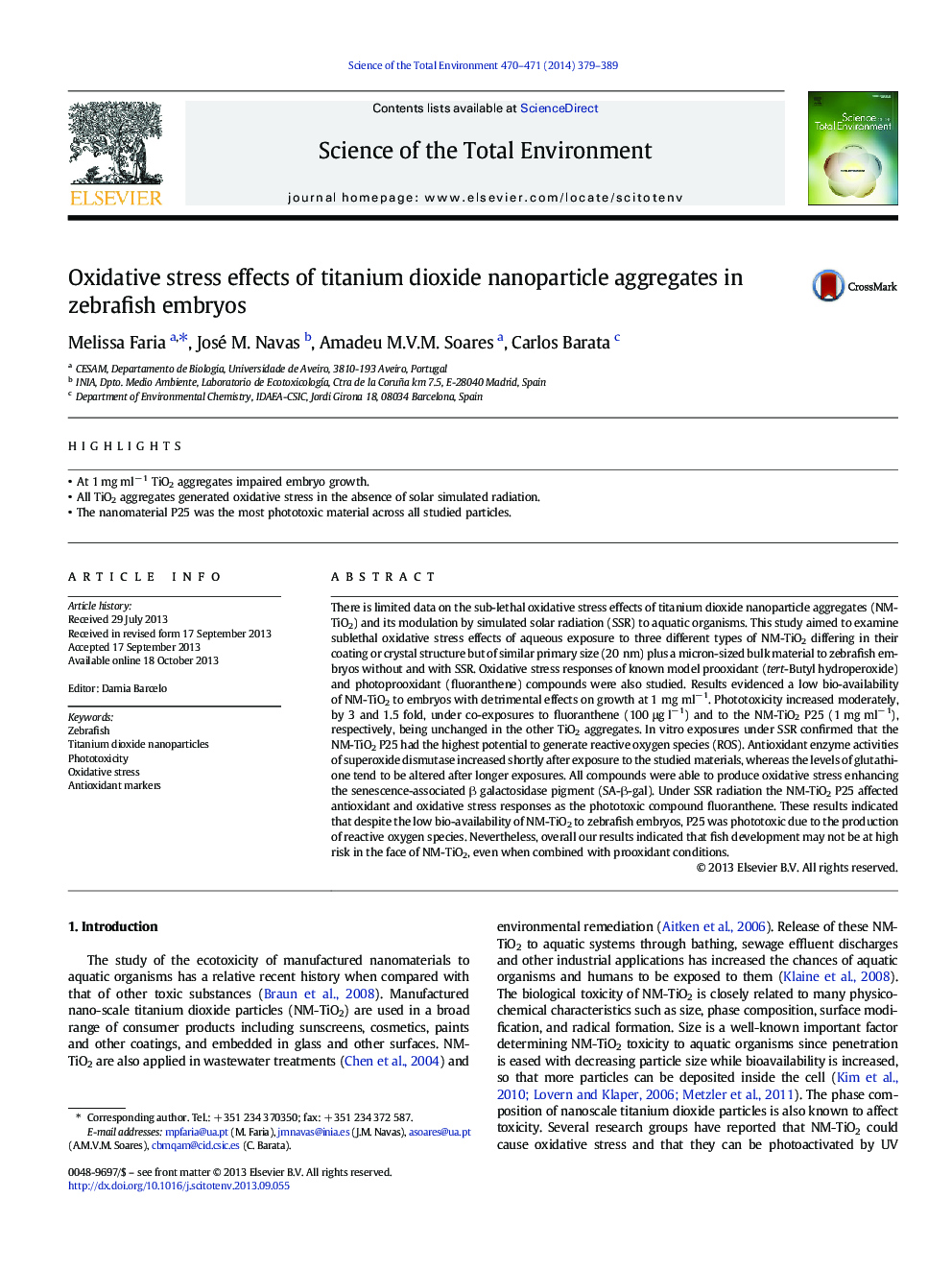| Article ID | Journal | Published Year | Pages | File Type |
|---|---|---|---|---|
| 6331381 | Science of The Total Environment | 2014 | 11 Pages |
Abstract
There is limited data on the sub-lethal oxidative stress effects of titanium dioxide nanoparticle aggregates (NM-TiO2) and its modulation by simulated solar radiation (SSR) to aquatic organisms. This study aimed to examine sublethal oxidative stress effects of aqueous exposure to three different types of NM-TiO2 differing in their coating or crystal structure but of similar primary size (20 nm) plus a micron-sized bulk material to zebrafish embryos without and with SSR. Oxidative stress responses of known model prooxidant (tert-Butyl hydroperoxide) and photoprooxidant (fluoranthene) compounds were also studied. Results evidenced a low bio-availability of NM-TiO2 to embryos with detrimental effects on growth at 1 mg mlâ 1. Phototoxicity increased moderately, by 3 and 1.5 fold, under co-exposures to fluoranthene (100 μg lâ 1) and to the NM-TiO2 P25 (1 mg mlâ 1), respectively, being unchanged in the other TiO2 aggregates. In vitro exposures under SSR confirmed that the NM-TiO2 P25 had the highest potential to generate reactive oxygen species (ROS). Antioxidant enzyme activities of superoxide dismutase increased shortly after exposure to the studied materials, whereas the levels of glutathione tend to be altered after longer exposures. All compounds were able to produce oxidative stress enhancing the senescence-associated β galactosidase pigment (SA-β-gal). Under SSR radiation the NM-TiO2 P25 affected antioxidant and oxidative stress responses as the phototoxic compound fluoranthene. These results indicated that despite the low bio-availability of NM-TiO2 to zebrafish embryos, P25 was phototoxic due to the production of reactive oxygen species. Nevertheless, overall our results indicated that fish development may not be at high risk in the face of NM-TiO2, even when combined with prooxidant conditions.
Related Topics
Life Sciences
Environmental Science
Environmental Chemistry
Authors
Melissa Faria, José M. Navas, Amadeu M.V.M. Soares, Carlos Barata,
